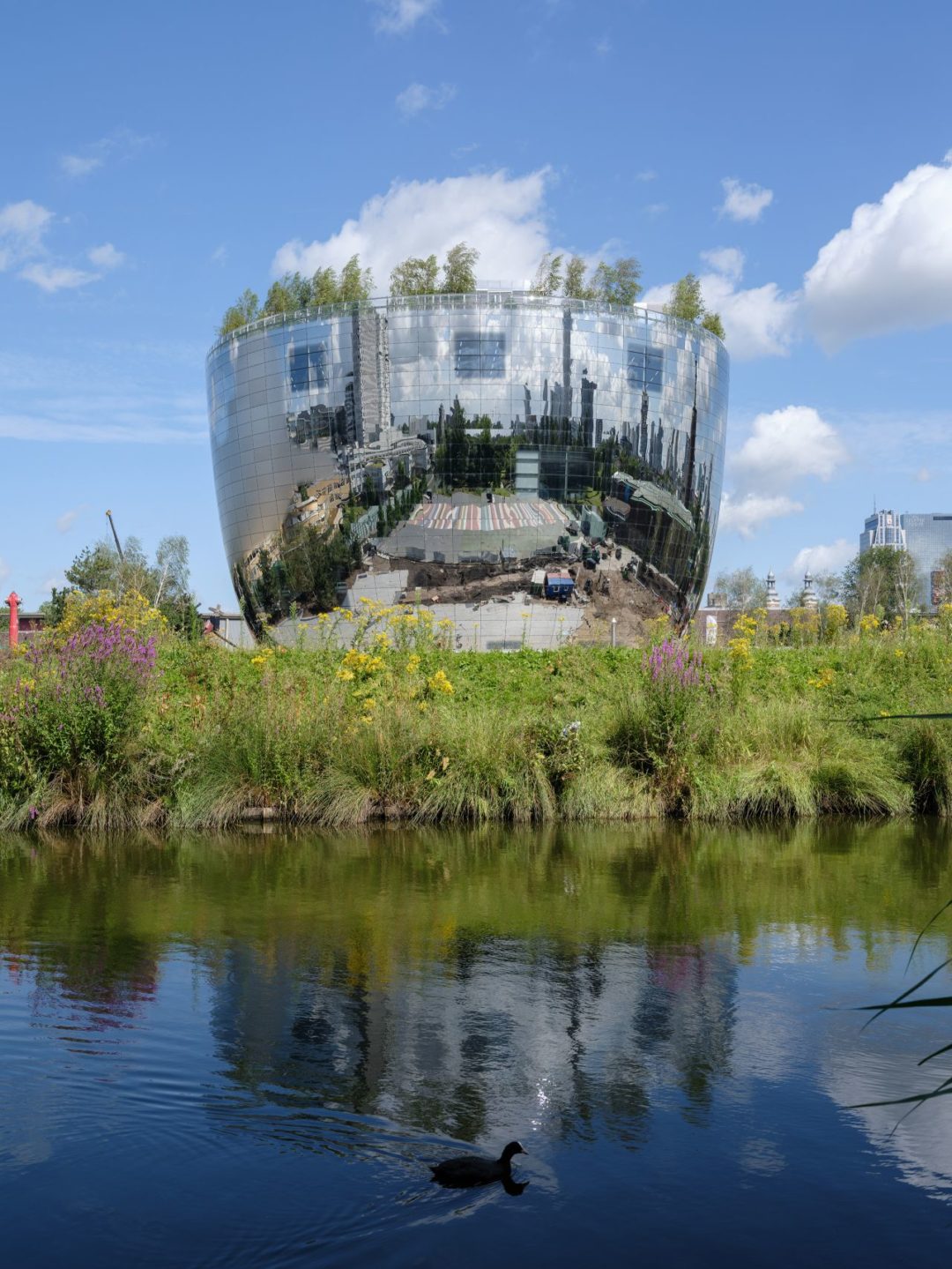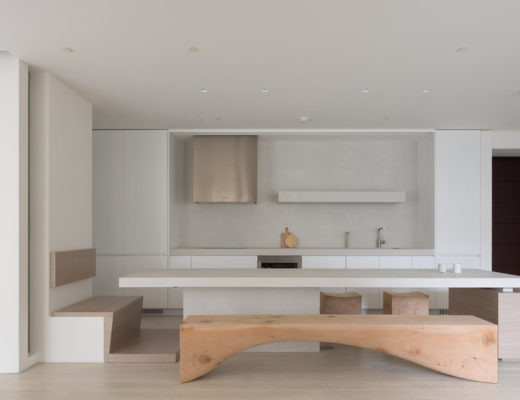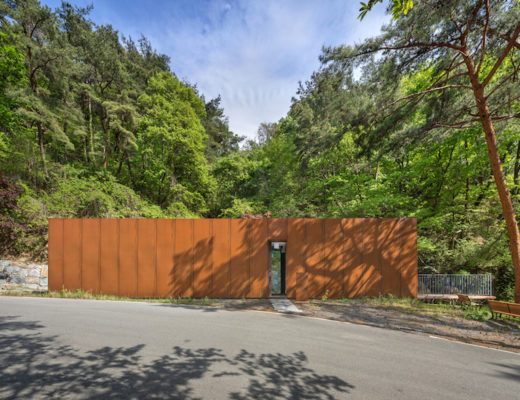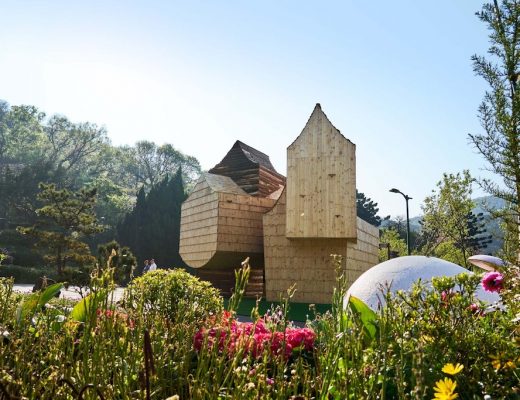The MVRDV-designed Depot Boijmans Van Beuningen opened to the public on November 6 on the grounds of OMA’s Museumpark in Rotterdam, the port city of the Netherlands. The formal opening on November 5, led by King Willem-Alexander of the Netherlands, comes nearly eight years after MVRDV won the commission back in 2013. (Top photo: Ossip van Duivenbode)
The €94 million (SGD147 million) Depot Boijmans Van Beuningen, houses the extensive collection of Museum Boijmans Van Beuningen, which itself is undergoing an overhaul by Mecanoo . At the depot, everything revolves around the interaction between the visitors and more than 151,000 works that are stored in the various depositories. Visitors can – alone or in groups – take guided tours through the air-conditioned storage spaces or enjoy the rooftop forest and restaurant Renilde, both at a height of 35 metres.
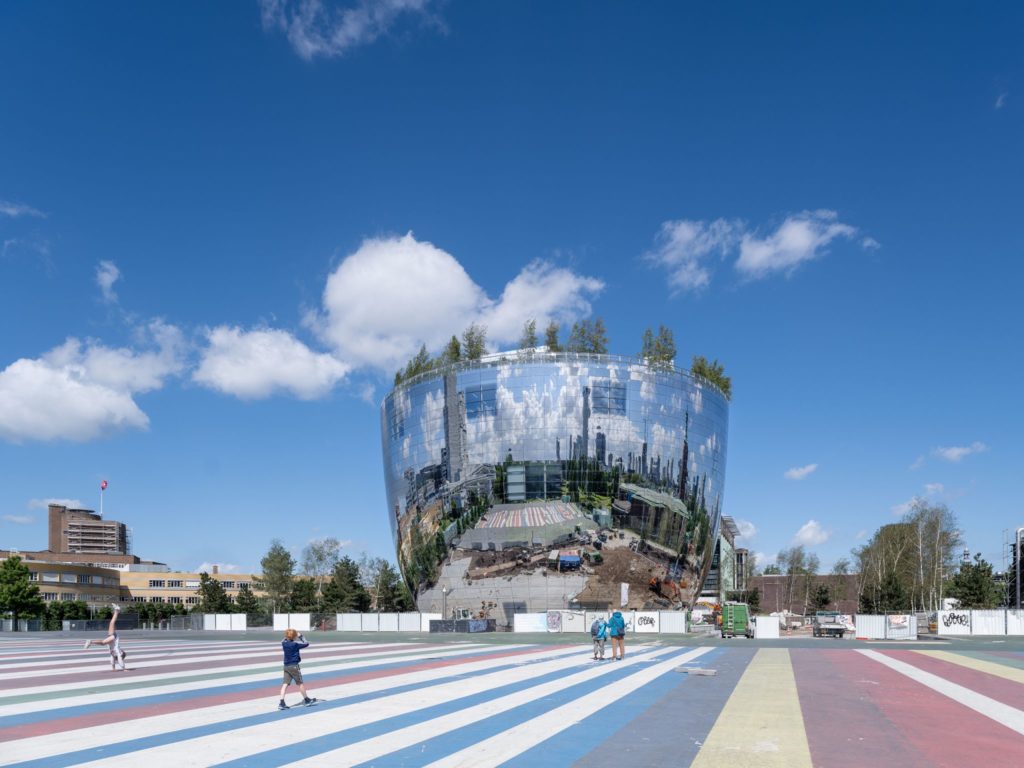
The Depot Boijmans Van Beuningen is the first publicly accessible art storage facility in the world. The brief was to design a building that would be as inviting as possible, where all different target groups would feel welcome. It was emphatically not to become a second museum, where only a small percentage of the collection can be exhibited, but an engine room that reveals the world behind the storage and maintenance of a dazzling number of art and design works. Visiting the depot offers a completely new experience: the art is arranged according to size and climate requirements, not art history periods. Old and contemporary works are juxtaposed, inviting new connections to be made.
FORM, FUNCTION AND CONTEXT
The MVRDV design team, led by architect and urban planner Winy Maas, opted for a round, sturdy, functional building that does not turn its back on its neighbours, instead establishing a new relationship with both the Museumpark and the city of Rotterdam. The ambition was to create a building that seems to disappear into its surroundings, but at the same time is a safe house for the collection, which is worth billions.
The depot owes its shape to the desire to give the building a relatively small footprint. As a result, the building takes up less space in the park, but curves upwards with a 10-metre overhang to accommodate the entire programme – storage spaces, restoration studios, catering facilities, and film and presentation rooms. The building has five climate zones to accommodate the most delicate art, from prints and paintings to photography.
THE ROOFTOP AND EXTERIOR WEAVE A NARRATIVE
The mirrored façade, consisting of 6,609m2 of glass divided into 1,664 panels, ensures that the building visually blends into its surroundings. The large entrance doors merge into the façade and only become visible during opening hours, when the façade opens up like a gadget out of a James Bond film. Every day – depending on weather conditions – the depot looks different, like a living painting. These panels were adopted by many inhabitants and cultural institutions of Rotterdam for 1,000 euros each as a gesture of support for the Depot. The mirroring panels ensure the integration of the design with its surroundings, by reflecting and thus honouring the activity and the nature of the Museumpark, designed by landscape architect Yves Brunier with OMA in the ’90s.

Inside, the most eye-catching part of the building is the atrium, with its criss-crossing staircases and windows into the storage spaces that give the impression of a panopticon, with a view of the art from all sides. Thirteen large display cases ensure that the visitor comes into contact with a collage of collection pieces as soon as they enter the building. For the interior, there was close cooperation with a number of artists: John Körmeling designed the entrance and Marieke van Diemen designed the display cases. For the exterior, Pipilotti Rist designed a light installation that makes the depot come alive at night.
The depot is also an experiment in adding nature to the city. This takes place in the form of the 35-metre-high rooftop forest, which was awarded the prize for the best Dutch roof even before it opened. A rooftop forest populated by 75 multi-stemmed birch trees standing several metres tall, alongside fir trees and grasses – they help retain water, promote biodiversity, and reduce heat stress in the city.
The birches were bred in a special tree nursery for three years before they were planted on the rooftop terrace in spring 2020. Their roots are interconnected and, because the windbreak and the cross-shaped restaurant – designed by another Dutch firm Concrete – on the roof protect the birches from strong winds, they will be able to withstand stormy weather even at that height. The rooftop is situated on the sixth floor and is also accessible via an express lift. It offers panoramic views across the city of Rotterdam.
STORAGE OF THE ARTEFACTS
In the Depot, artefacts are stored on the basis of climatic requirements, rather than artistic movement or era. Each storage space is provided with a specific climate that is maintained by a climate control system. There are five different climate zones, suited to works of art produced with different materials: metal, plastic, organic/inorganic, black-and-white and colour photography. This method of storing the art collection calls for specific climatic conditions in which the air is not overly cold, warm, humid or dry.

SUSTAINABLE APPROACH
Sustainability is an important feature in the design. The building includes many features to reduce the use of energy and water during its operation. A combination of geothermal heat exchange, solar panels, LED lighting, and high-performance insulation makes the building energy neutral with regards to building-related energy consumption. Rainwater will be stored in the basement and used for irrigation and toilet facilities, reducing the building’s water consumption. This water storage, combined with the green roofs, makes water run-off minimal, with any remaining run-off directed into the pond of Het Nieuw Instituut, which is converted into a water basin for the surroundings. In this way, the Depot can be disconnected from the sewage system for rainwater.
“I think it’s great to see how the depot has been embraced by Rotterdammers even before it opened”, says MVRDV founding partner Winy Maas. “The depot is a building that makes many people happy; skaters have their own place outside that will hopefully stay, while passers-by try to figure out the best place to stand to take a good selfie. As an architect, I hope that visitors will soon enjoy the interior, the rooftop forest, and the experience of being in direct contact with the art without the mediation of a curator. Our ambition was to give the Museumpark a new dimension, and to bring different target groups, from schoolchildren to Feyenoord fans, into contact with the Boijmans collection in an innovative way. We hope to have added a new work of art to Rotterdam’s already rich architecture collection.”
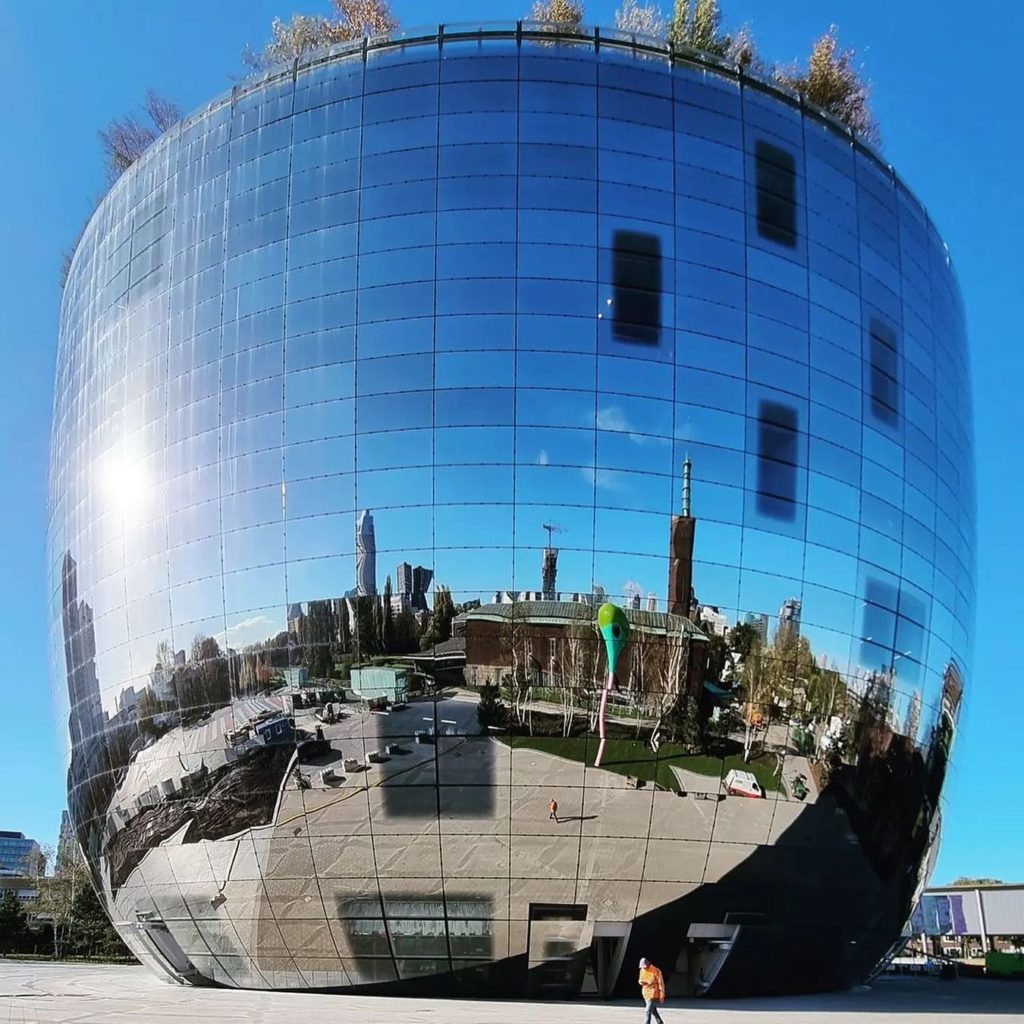
“A good house is of vital importance. If you don’t have one, you are already playing in the second division. With the Depot Boijmans Van Beuningen, the amazing collection finally gets its own architecture”, say Sjarel Ex and Ina Klaassen, the directors of the Museum Boijmans Van Beuningen. “Only then do you see how the functioning of the art storage impacts the museum. With the depot, the museum is giving its collection, which is largely owned by the municipality but also largely by private individuals, a permanent future. Visitors can now see for themselves the love, care, and attention to detail with which each individual work of art is preserved for future generations. The museum, the public, and Rotterdammers are going to have a lot of fun with the depot.”
“The already iconic Depot Boijmans Van Beuningen is a wonderful asset to Rotterdam”, says Said Kasmi, Rotterdam’s Alderman for Education, Culture and Tourism. “The versatility of the building appeals to me: it is both a place to wander between a lot of great art, and a place to enjoy special architecture, whether you are outside or inside. Add to that roof restaurant Renilde, a wonderful place to enjoy a culinary highlight with a spectacular view over our city. Finally, it is a place where future makers and conservators – the children and students of today – can become fascinated by the creation, conservation, and restoration of art.”
Depot Boijmans Van Beuningen is open Tuesdays through Sundays from 11am to 6pm while the rooftop terrace and Renilde, led by executive chef Jim de Jong, is open to visitors till late and can be accessed via the express elevator without a main entrance ticket in the evening.
Depot Boijmans Van Beuningen is a collaboration between Museum Boijmans Van Beuningen, the municipality of Rotterdam and the De Verre Bergen Foundation.
Principal in charge: Winy Maas
Partner: Fokke Moerel
Competition team
Jacob van Rijs, Sanne van der Burgh, Marta Pozo, Gerard Heerink, Elien Deceuninck, Saimon Gomez Idiakez, Jose Ignacio Velasco Martin, Jason Slabbynck, Mariya Gyaurova, Lukasz Brzozowski
Project team
Sanne van der Burgh, Arjen Ketting, Fedor Bron, Gerard Heerink, Elien Deceuninck, Jason Slabbynck, Rico van de Gevel, Marjolein Marijnissen, Remco de Haan
Visualisation: Antonio Luca Coco, Matteo Artico, Carlo Cattó
Strategy & Development: Jan Knikker, Irene Start
Copyright: MVRDV 2021 – (Winy Maas, Jacob van Rijs, Nathalie de Vries, Frans de Witte, Fokke Moerel, Wenchian Shi, Jan Knikker)
Partners
Contractor: BAM Bouw en Techniek
Structure: IMd Raadgevend Ingenieurs
Cost engineering: BBN
Installations: RHDHV
Façade consultants: ABT
Building Physics: Peutz
Landscape architect: MTD Landschap architecten
Restaurant designer: Concrete
Art collaborations: John Körmeling (lobby), Marieke van Diemen (atrium), Pipilotti Rist (exterior light show)
Photographs: © Ossip van Duivenbode, © Aad Hoogendoorn, © Iris van den Broeke
You might also like:
Hong Kong’s M+ museum designed by Herzog & de Meuron acquires archives of Rocco Design Architects
Shenzhen Maritime Museum by Sanaa evokes Clouds on the Sea with its minimalist bulbous form
W Hotel Osaka by Concrete fuses Japanese minimalism with colourful and graphic extravagance

